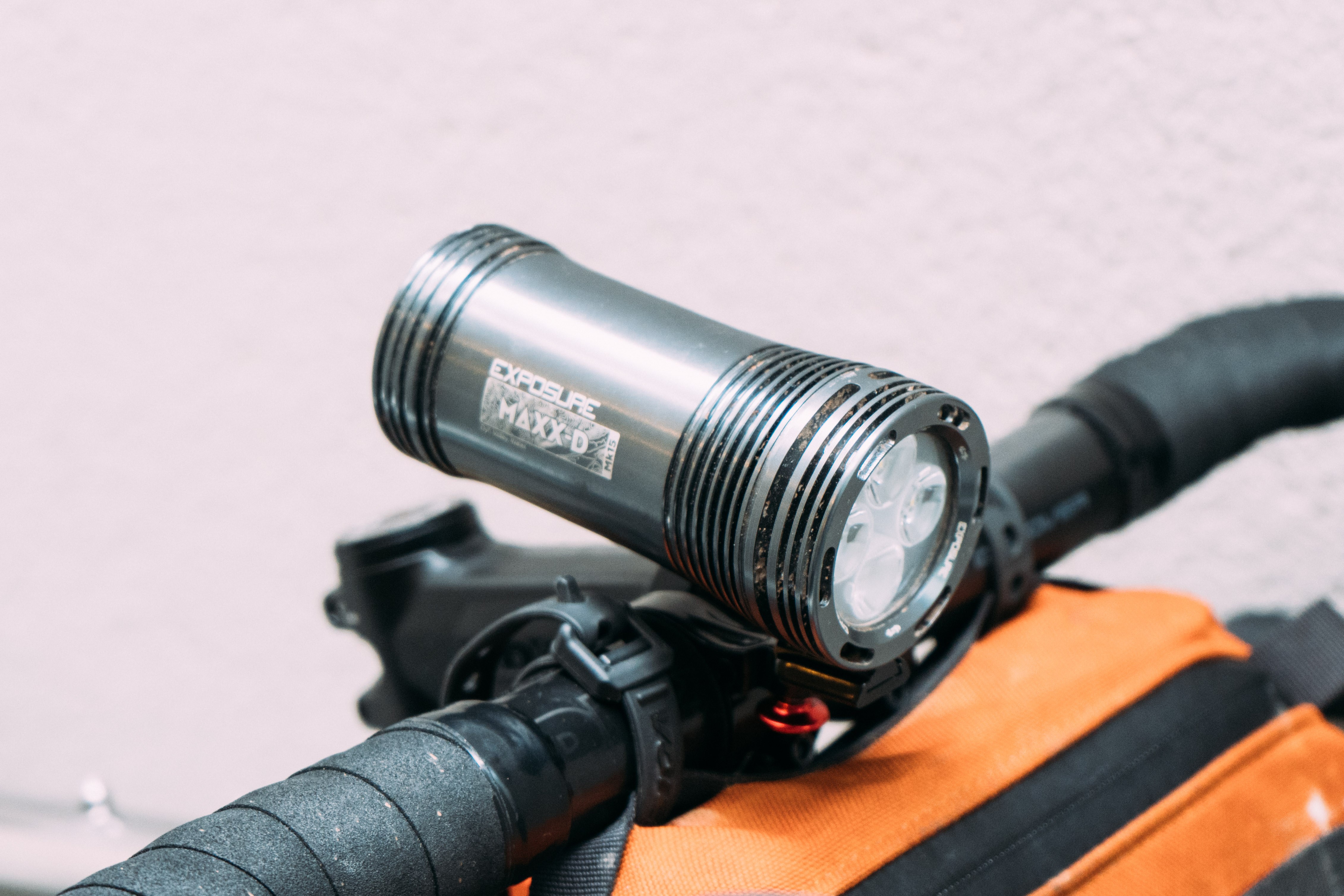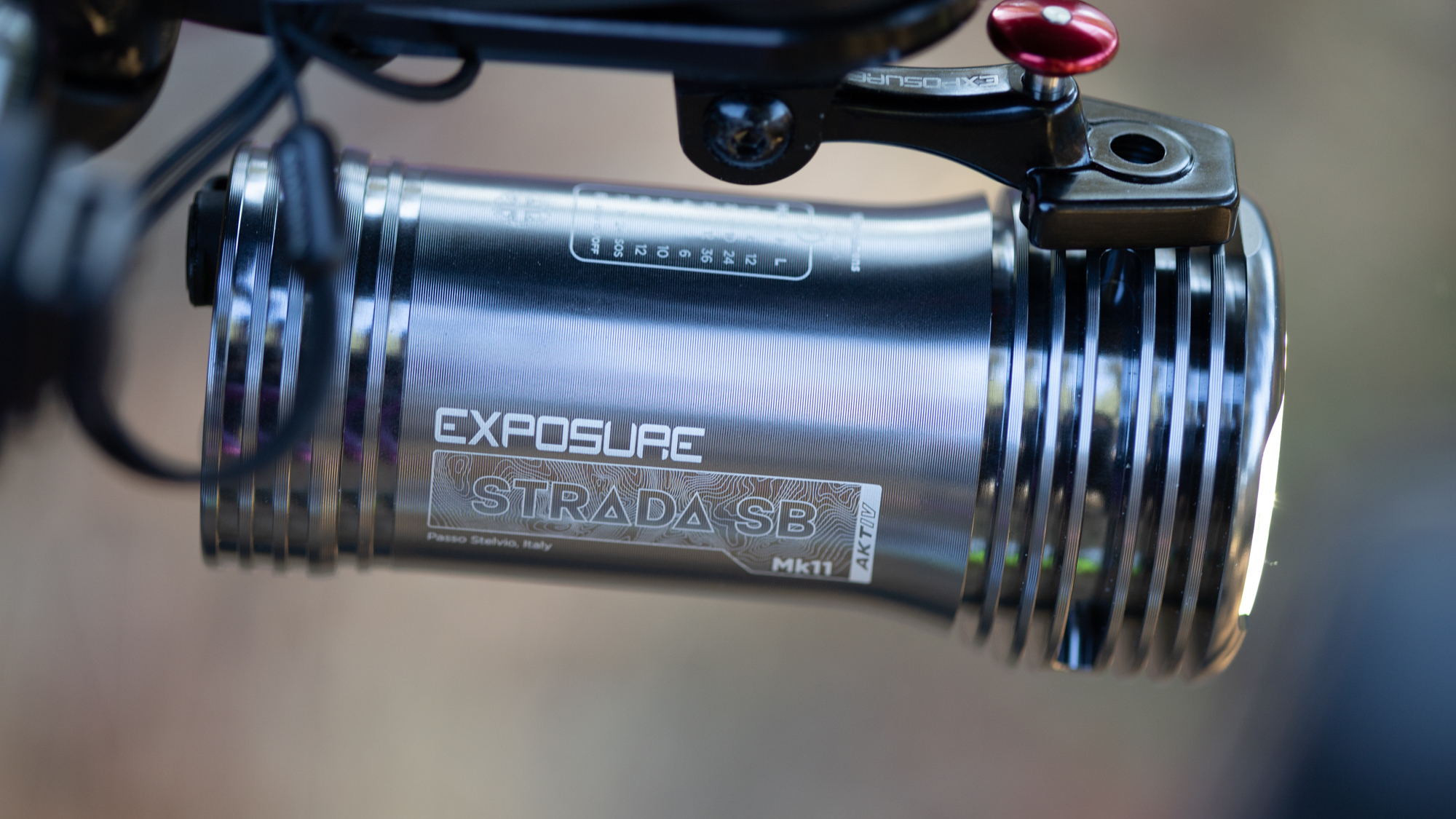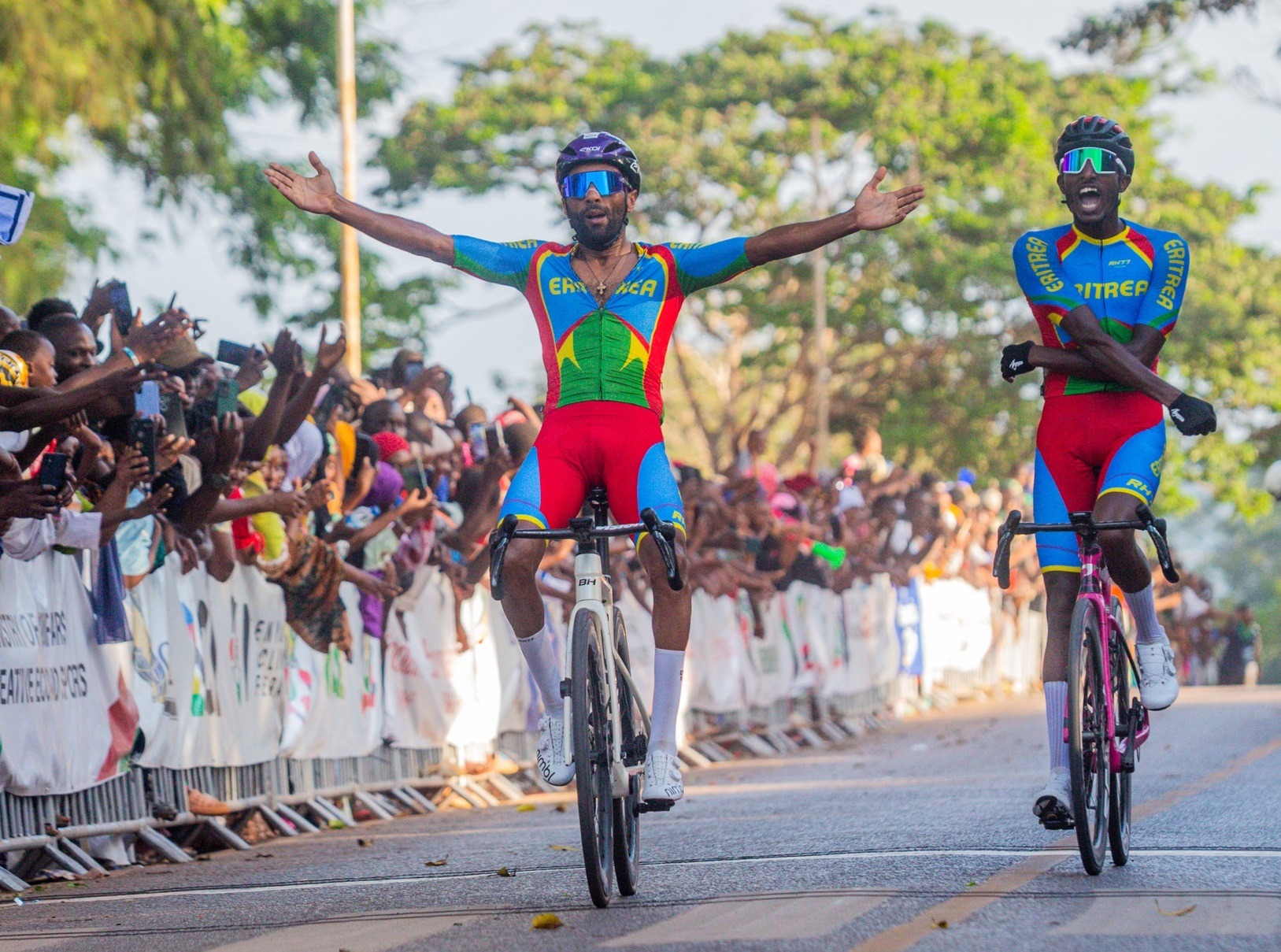Why are bike lights so expensive?
Some brands charge several hundred for a light, and some seem to charge pennies. Does it make a difference?

Bike lights cover quite a large range of different price points nowadays, and it can be daunting trying to work out what level you need to spend and why. Budget bike lights can start off at around £30/$40 for something that is decent, while the best bike lights on the market can reach the £500/$650 mark. But what differentiates these lights; why are some half a grand, and others the cost of a couple of café stops?
Brightness

This is probably the easiest reason for why some bikes cost more than others. A Trek Ion 200 RT has 200 lumens and costs £35-50 ($40-65) depending on where you shop. An Exposure Six Pack 15 light at £495 ($650) comes with a whopping 6,000 lumens. Cost per lumens, the Exposure light actually comes out at better value, though that only works if you actually need those extra lumens.
This is an extreme example, as the Trek Ion is more of a commuter light, and will not illuminate a country lane well enough to ride safely in the dark. The Exposure meanwhile can be used for rapid downhill MTB adventures and illuminates most of the forest.
Generally speaking, 600-1000 lumens is about right for riding at a reasonable speed on a country lane. This will often cost in the region of £100-150 ($160) for a light that has fewer smart features and a battery life on this brightness of 1.5 hours.
It’s also worth considering how this brightness is applied. For road riding, a more direct beam of light is fine, with less of a lux (spread of light). Greater Lux however is vital for off-road riding where you will likely need to change lines more and be able to see the peripheral trail.

Battery life
That leads us nicely onto the next feature that impacts costs, battery life. The new Exposure Sirius 11 features 1300 lumens at £120 ($160), but a battery life on that brightness of 1.5 hours. Drop it down to 755 lumens and you get 2 hours of battery life.
The Exposure Strada MK12 SB AKTIV has only a handful more lumens at 1700, costs three times as much, but has a battery life at max power for 2 hours with lower powered modes extending this significantly while still exceeding 1000 lumens.
The latest race content, interviews, features, reviews and expert buying guides, direct to your inbox!
As with lumens, if you're honest with how much battery life you really need (plus a little extra for contingencies) you can save a lot of cash.

Smart features
Nowadays, bike lights are making use of more and more additional features, often packaged as 'smart bike lights'. Whereas some of the cheapest light offerings for commuting in semi-lit city environments feature something as simple as a single LED, more expensive offerings have added functionality.
These features can be things such as device connection, radar vehicle detection, cameras, light dimming, and a variety of other features besides. The Wahoo Trackr Radar for example has a less powerful light than the Lezyne Strip Drive Pro 400+, but the radar and brake light features bump that cost up. I really like both lights for very different reasons.
Simply put, these features require more complex chips within the light, as well as user interface systems or BLE (Bluetooth low energy) connection.
Many of us may be happy with just a ‘dumb’ light that can be used for illumination and visibility. However, I’ve come around the smart lights myself and ride with a radar light in all conditions, rain or shine, for the safety features.

Build quality
Materials used will also impact the cost of a bike light. In the same way that a carbon or titanium frame will often cost more than a aluminium frame, the same is true of lights.
I’ve mentioned Exposure lights a few times, and that is because they regularly make it into our best light guides. They are almost exclusively machined from anodised 6063 aluminium, which adds to the cost as well as feeling highly premium. Our Senior Tech Writer, Will Jones, once dropped an Exposure Strada on a descent at 60km/h thanks to a dodgy aftermarket mount, and it survived with just a few scratches despite tumbling down the road for ages.
The likes of Magicshine and other more value-oriented brands tend to use more plastic in the construction, but the likes of the ALLTY 12000S does use aluminium in the body as well, for a far cheaper £89.99.
But materials are not the only component of build quality, there is how the light lasts longer term. I have had some cheaper lights malfunction, often in the form of the on/off switch degrading and breaking down. The new Exposure Sirius 11 for example uses a metal capped button, designed to have more resilience over time.

Aftersales service
Another element of cost comes with good aftermarket service. If you are spending big money on a bike, even frankly £75 or more, you want that light to work well, and if for any reason it stops doing so, you want ease of replacement or fixing from the brand.
I’ve had a couple of brands where certain products have been temperamental over the years, but the customer service has been so good at sorting replacements that I am happy to continue using the brand.
If you’re based in the UK, there can be additional benefit to using a light from a UK company for ease of shipping to and from, and the same goes for those of you Stateside, especially when tariffs come into play. However that’s not to say you can’t get excellent customer service from EU or Asia based companies as well. Be sure to look over things like TrustPilot reviews of the brands before making a purchase.

Are expensive lights worth it?
So although some bike lights might be incredibly cheap, while other appear somewhat excessively priced, there is often good reason for these differences in price.
Generally speaking, if you are doing shorter commutes to and from work in the city, you can get away with a relatively cheap light with lower power and battery life. Just be sure to charge it at work.
If you’re doing multi-day gravel tours on hazardous trails, you’ll want to spend more on a powerful light with a rugged build and longer battery life. Even better, check that the light can be used while charging for use with external charging packs.
I’ve had the good fortune to test budget lights and higher end offerings. You don’t need the more premium models, but they are often better. You can achieve the desired level of functionality from cheaper models though, depending on your riding situations and environments.

Freelance cycling journalist Andy Turner is a fully qualified sports scientist, cycling coach at ATP Performance, and aerodynamics consultant at Venturi Dynamics. He also spent 3 years racing as a UCI Continental professional and held a British Cycling Elite Race Licence for 7 years. He now enjoys writing fitness and tech related articles, and putting cycling products through their paces for reviews. Predominantly road focussed, he is slowly venturing into the world of gravel too, as many ‘retired’ UCI riders do.
When it comes to cycling equipment, he looks for functionality, a little bit of bling, and ideally aero gains. Style and tradition are secondary, performance is key.
He has raced the Tour of Britain and Volta a Portugal, but nowadays spends his time on the other side of races in the convoy as a DS, coaching riders to race wins themselves, and limiting his riding to Strava hunting, big adventures, and café rides.
You must confirm your public display name before commenting
Please logout and then login again, you will then be prompted to enter your display name.
